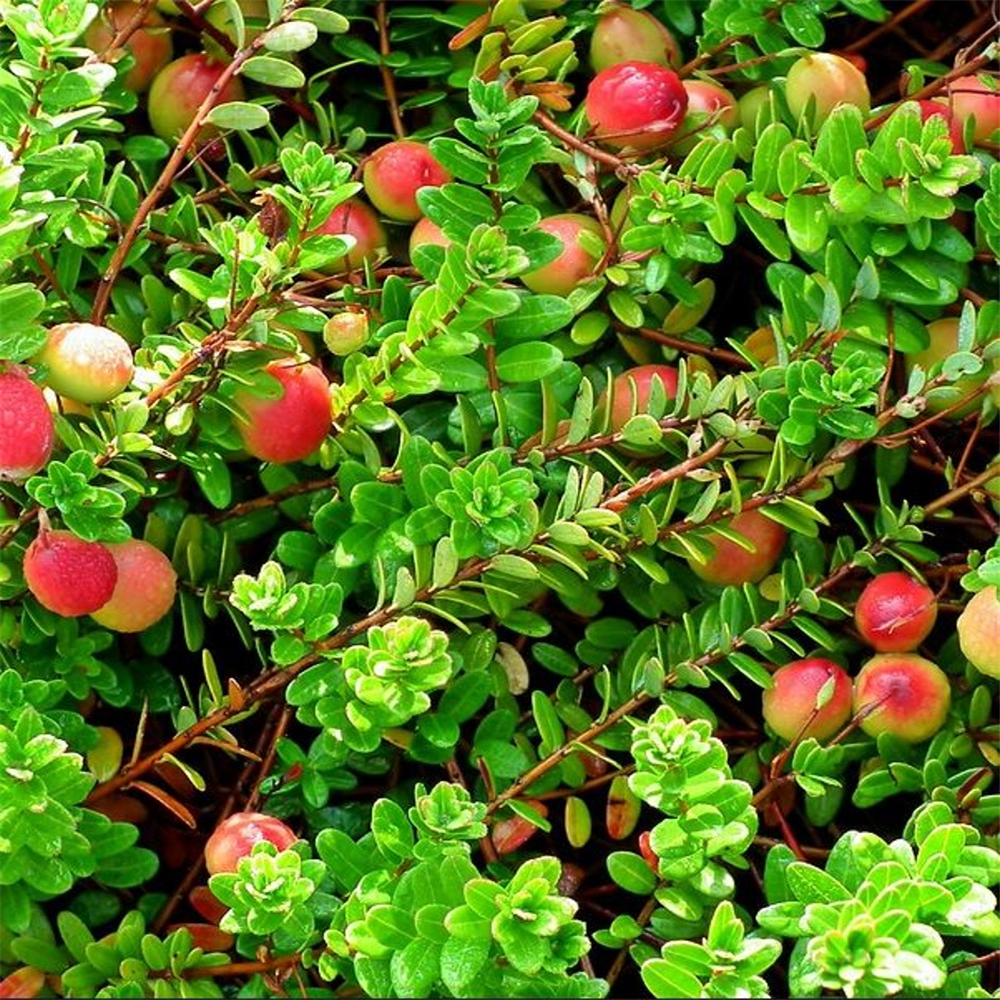
Cranberry
Vaccinium macrocarpon
Basic Information
🌿 Family: Ericaceae🗺️ Zone: 2-7
Other Names:
- Large Cranberry
- American Cranberry
- Bearberry
🌡️ Ideal Temperature : 60°F – 70°F
🔥 Heat Tolerance: Up to 85°F
❄️ Cold Tolerance: Down to -40°F
🌱 Type: Perennial
Layers
- Ground Cover
Functions
- Edible
- Medicinal
- Ground Cover
- Wildlife Attractor
Pests
No pests associated with this plant.
Description
Cranberry (Vaccinium macrocarpon) is a low-growing, evergreen shrub native to North America, particularly thriving in wetlands and bogs. It features slender, wiry stems that form dense mats, with small, leathery leaves that are dark green in summer and turn bronze in winter. The plant produces pink to red flowers in late spring, which develop into bright red berries known for their tart flavor.
🌞💧 Sun and Water Requirements:
Cranberries prefer full sun but can tolerate partial shade. They require acidic, well-drained, consistently moist soils, often found in bog-like conditions. Regular watering is essential to maintain soil moisture.
✂️🫘 Methods to Propagate:
Propagation is commonly achieved through cuttings or layering. Softwood cuttings taken in late spring or early summer root well. Alternatively, existing stems can be pinned to the ground to encourage rooting at nodes.
🧑🌾👩🌾 When to Harvest:
Berries are typically harvested in the fall, from September to November, when they turn a deep red color and have a firm texture. In commercial operations, fields are often flooded to facilitate easier collection of the floating berries.
Purpose
- **Edible**: The tart berries are used in sauces, juices, jellies, and dried snacks.
- **Medicinal**: Traditionally used to prevent urinary tract infections due to their antibacterial properties.
- **Ground Cover**: The plant's low-growing habit makes it effective for soil stabilization and erosion control.
- **Wildlife Attractor**: Provides food for various bird species and other wildlife.